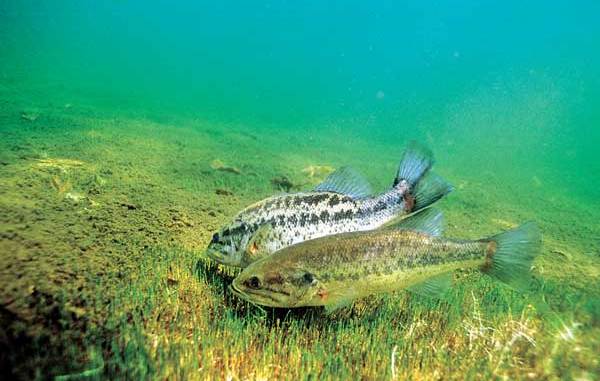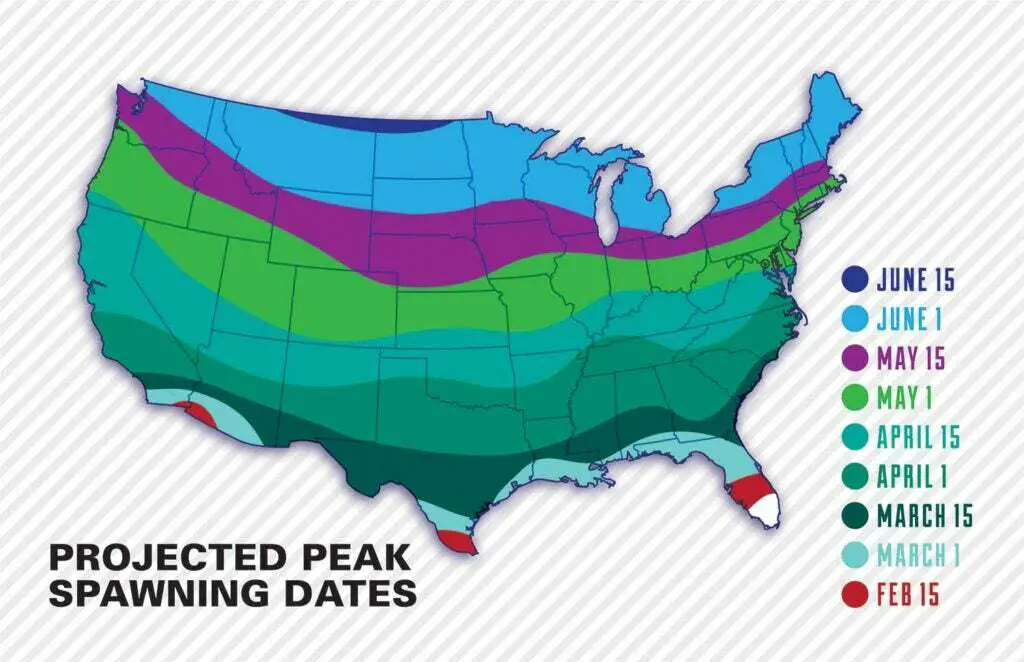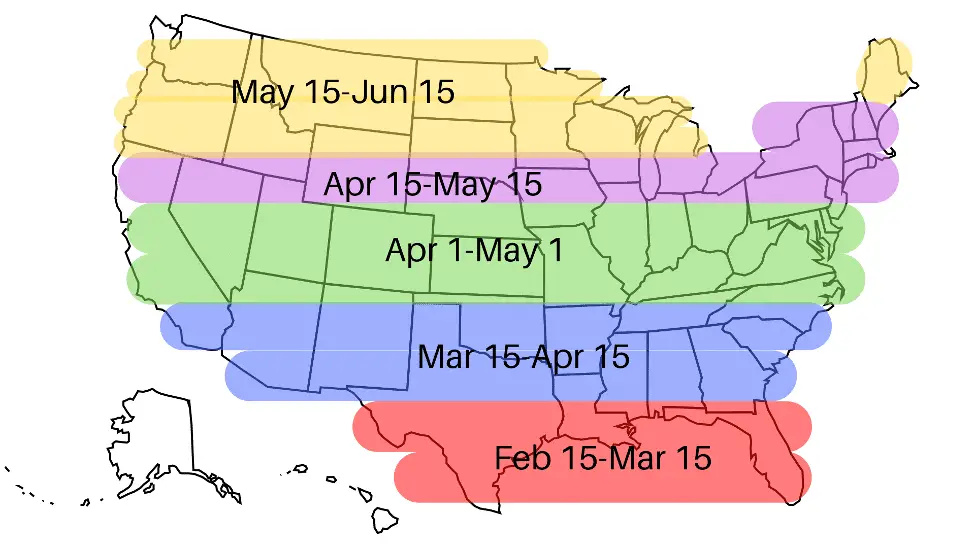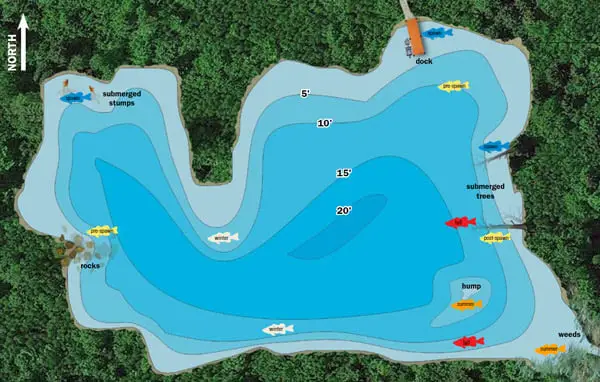Largemouth bass, those elusive creatures of the water, have a hidden secret that is essential to their survival – their spawning habits. But when, oh when, do these majestic fish choose to embark on this extraordinary journey? Understanding the timing of largemouth bass spawning is crucial for anglers, as it provides insight into their behavior and increases the possibility of a successful catch. So, if you’ve ever wondered about the mysteries of the bass world, join us as we unravel the captivating tale of when largemouth bass choose to spawn.
When Do Largemouth Bass Spawn

Understanding the Spawning Season of Largemouth Bass
As an avid angler, you must be curious about the spawning habits of largemouth bass. Understanding their spawning season is crucial for successful fishing trips and conservation efforts. The spawning season for largemouth bass typically occurs during the spring months, although the specific timing may vary based on several factors. Let’s delve deeper into these factors to gain a better understanding of when these prized gamefish reproduce.
Factors Influencing the Spawning Time
Several factors influence the spawning time of largemouth bass. One such factor is the geographical location of their habitat. The reproductive behavior of largemouth bass can vary across different regions. Other factors include water temperature, photoperiod (the length of daylight hours), and water quality. It is essential to consider these factors when predicting the spawning period for largemouth bass in your area and planning your fishing trips accordingly.
Geographical Variations in Spawning Periods
The spawning periods of largemouth bass can vary across different geographical regions. In general, the spawning season tends to occur earlier in the southern parts of the largemouth bass’s range, where the climate is warmer. On the other hand, in more northern areas, where the temperatures are cooler, the spawning season may be delayed until late spring or early summer. It’s crucial to be aware of these geographic variations to optimize your bass fishing experiences throughout the year.
Temperature as a Key Spawning Factor
Water temperature plays a significant role in triggering the spawning behavior of largemouth bass. Typically, when the water temperature reaches around 60 to 75 degrees Fahrenheit (15 to 24 degrees Celsius), largemouth bass start their spawning activities. This temperature range is considered optimal for successful reproduction. Monitoring the water temperature in your local fishing spots can give you valuable insights into when largemouth bass are likely to start their spawning rituals.

Effects of Photoperiod on Bass Spawning
In addition to water temperature, the length of daylight hours, known as photoperiod, also influences largemouth bass spawning. Longer daylight hours indicate the arrival of spring, signaling the bass to commence their reproductive activities. This natural cue triggers hormonal changes in both male and female bass, leading them to prepare for spawning. Observing the changing daylight hours in your area can help you anticipate the onset of the largemouth bass spawning season.
Role of Water Quality in Spawning
Water quality is another critical factor that affects the spawning success of largemouth bass. Clean, oxygen-rich water is essential for the survival of eggs and newly hatched fry. Pollution, excessive sedimentation, and low dissolved oxygen levels can impair the reproductive success of bass. It is crucial to conserve and protect the water quality in bass habitats to ensure their population’s long-term sustainability and the health of their offspring.

Female Bass Preparing for Spawning
Before spawning, female largemouth bass undergo various physical changes to prepare for the reproductive cycle. As spring approaches, female bass start developing eggs, which gradually enlarge and fill their ovaries. These eggs are vital for the continuity of the species. To ensure the highest chance of survival for their offspring, female bass search for suitable nesting sites in shallow, protected areas with ample cover. This preparation process sets the stage for successful reproduction during the spawning season.
Male Bass’ Role in the Spawning Process
Male largemouth bass also play a crucial role in the spawning process. As the spawning season approaches, male bass exhibit territorial behavior and compete for the best nesting sites. Once a suitable location is secured, the male cleans and prepares the nest by removing debris and creating a shallow depression on the lake or river bottom using his tail. The male bass then waits for a receptive female to enter the nest, where the actual spawning takes place. After fertilization, the male guards the nest and the eggs until they hatch, ensuring the survival of the next generation.

Spawning Habits and Nest Building
During the spawning season, it is fascinating to observe the unique behaviors of largemouth bass as they engage in nesting and courtship rituals. Male bass are responsible for constructing the nests and defending them against intruders. The nests are typically shallow depressions on sandy or gravelly bottoms, often located near vegetation or submerged structure. By carefully guarding the nest, male bass reduce the risk of predation and protect the developing offspring, promoting a higher survival rate for the young fry.
Caring for Largemouth Bass Offspring
Once the spawning is complete, the male largemouth bass assumes the responsibility of protecting the eggs and later, the fry. Male bass fan their fins to create water circulation around the eggs, which helps prevent oxygen depletion and ensures their healthy development. The diligent father guards the nest fiercely, keeping predators at bay until the eggs hatch. After hatching, the male continues to protect the fry until they are capable of venturing out on their own. This parental care provided by male bass significantly increases the survival rates of the offspring, contributing to the success of the largemouth bass population.
In conclusion, the spawning season of largemouth bass is a remarkable period filled with intricate behaviors and shared responsibilities between males and females. By understanding the various factors influencing the spawning time, such as geographical variations, water temperature, photoperiod, and water quality, you can enhance your fishing experiences while promoting the conservation of this beloved gamefish. Respect the spawning season, handle the fish with care if caught during this critical time, and contribute to the long-term sustainability of the largemouth bass population for future generations of anglers to enjoy. Happy fishing!





